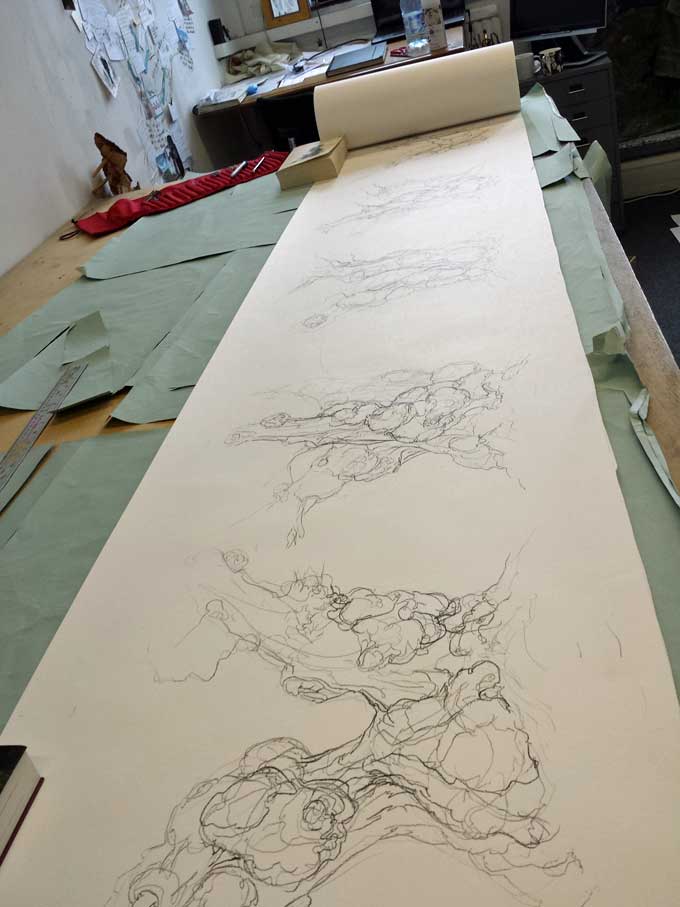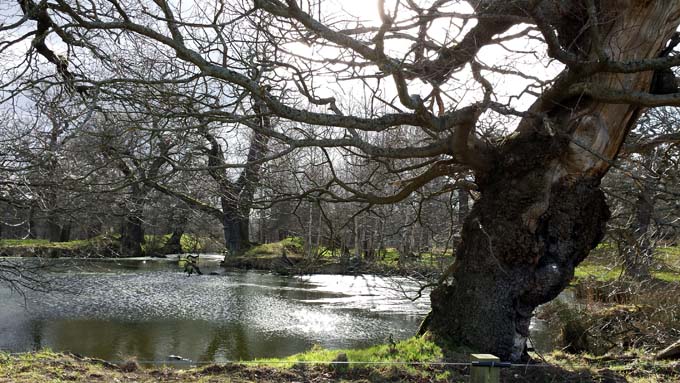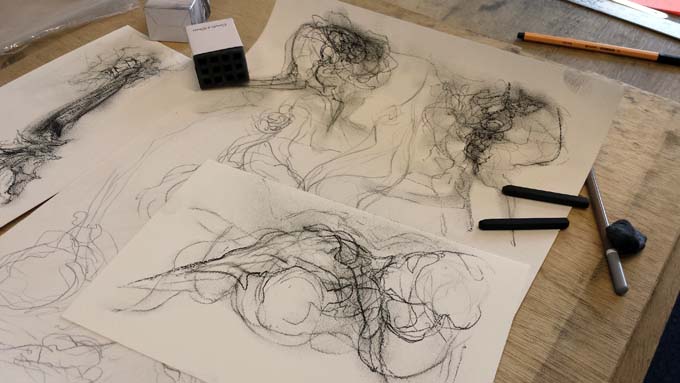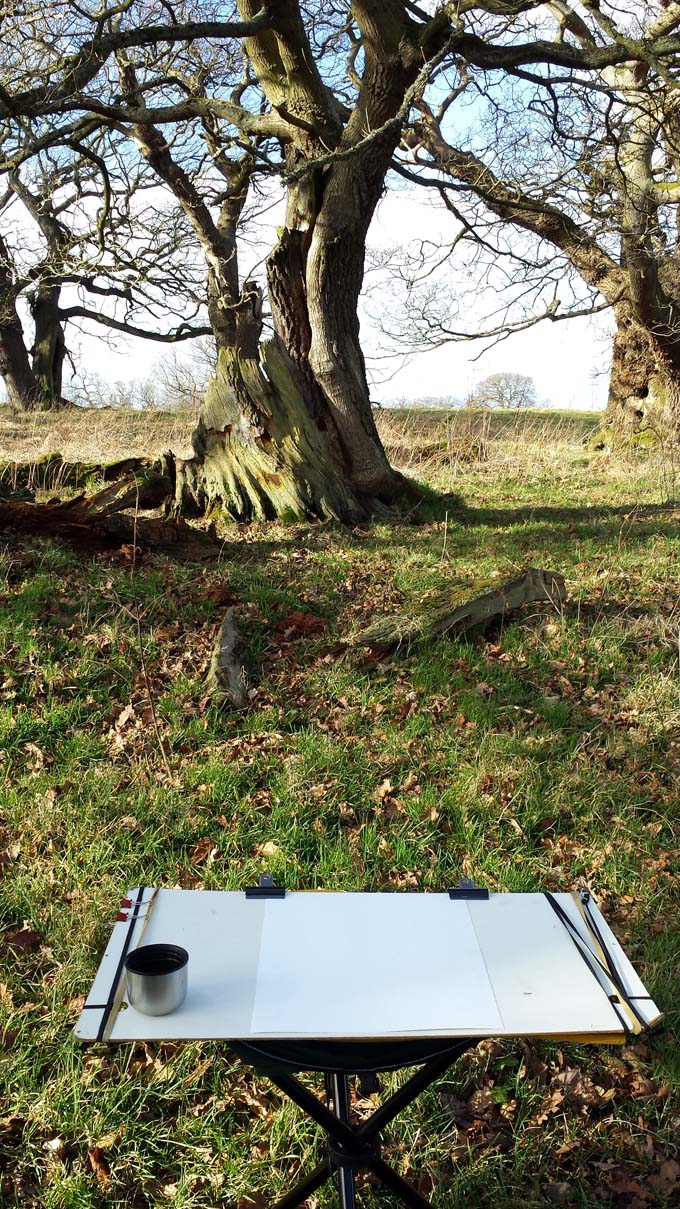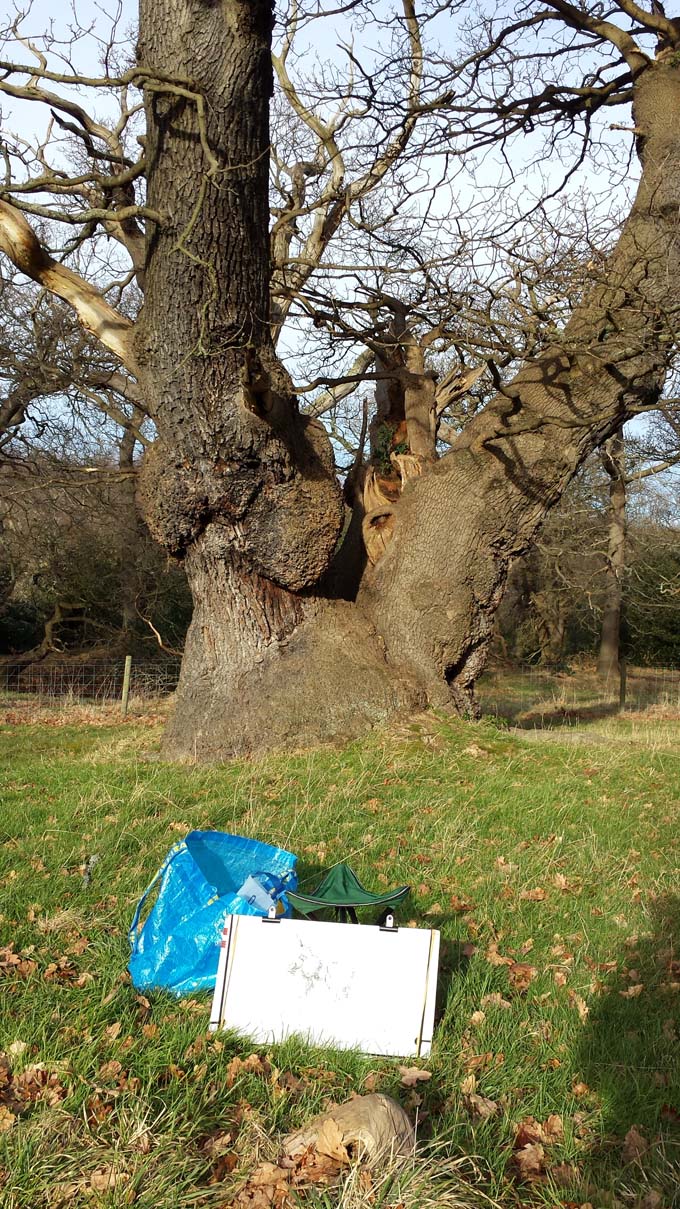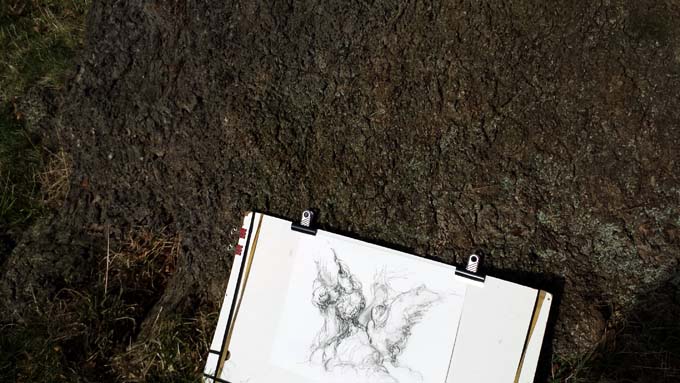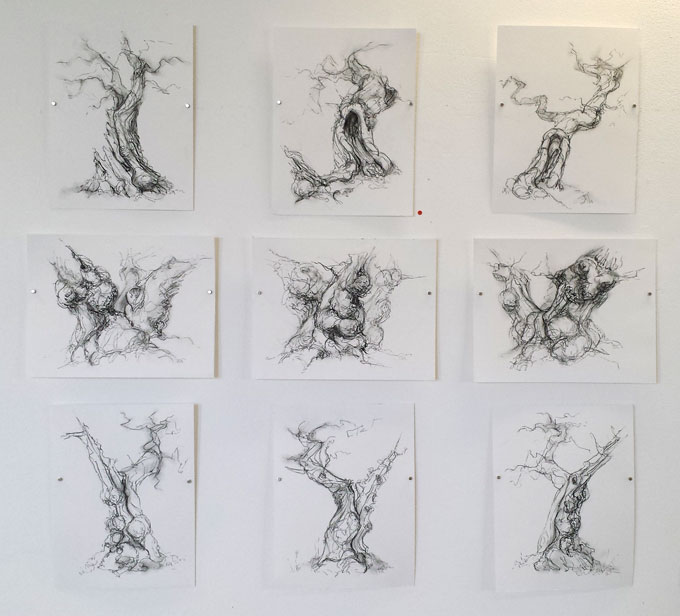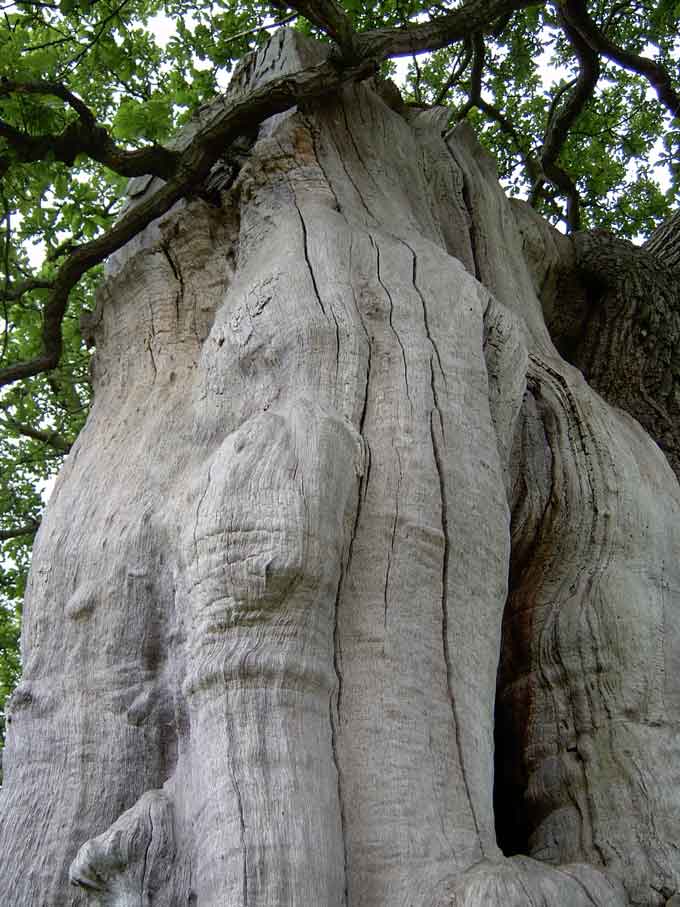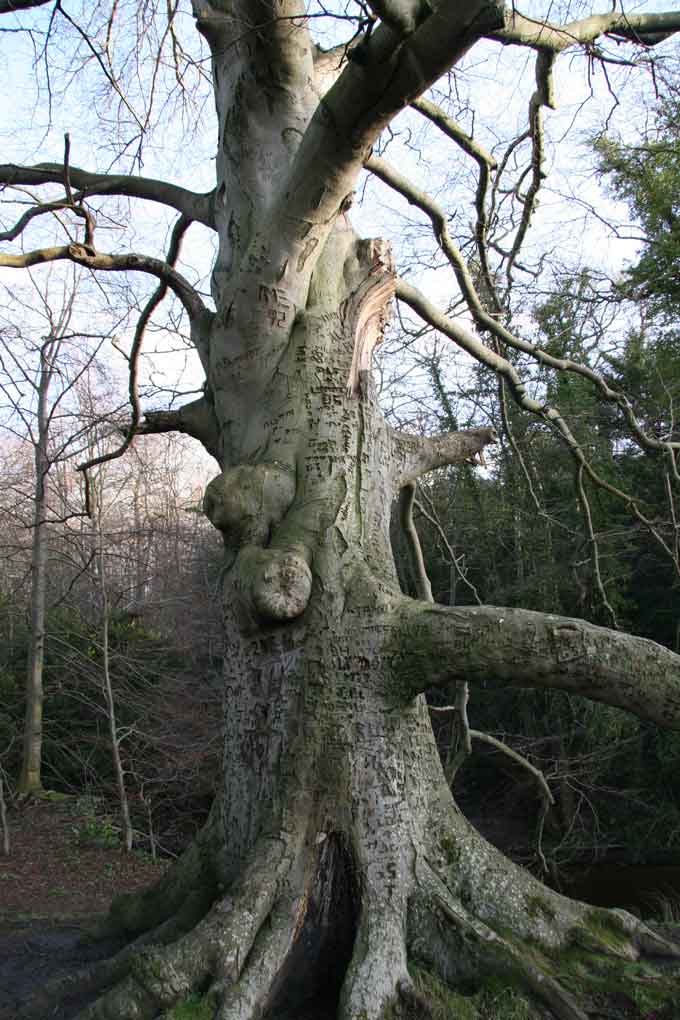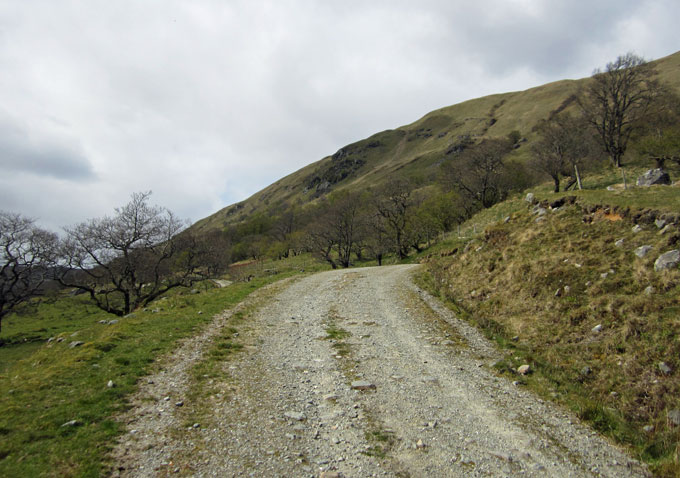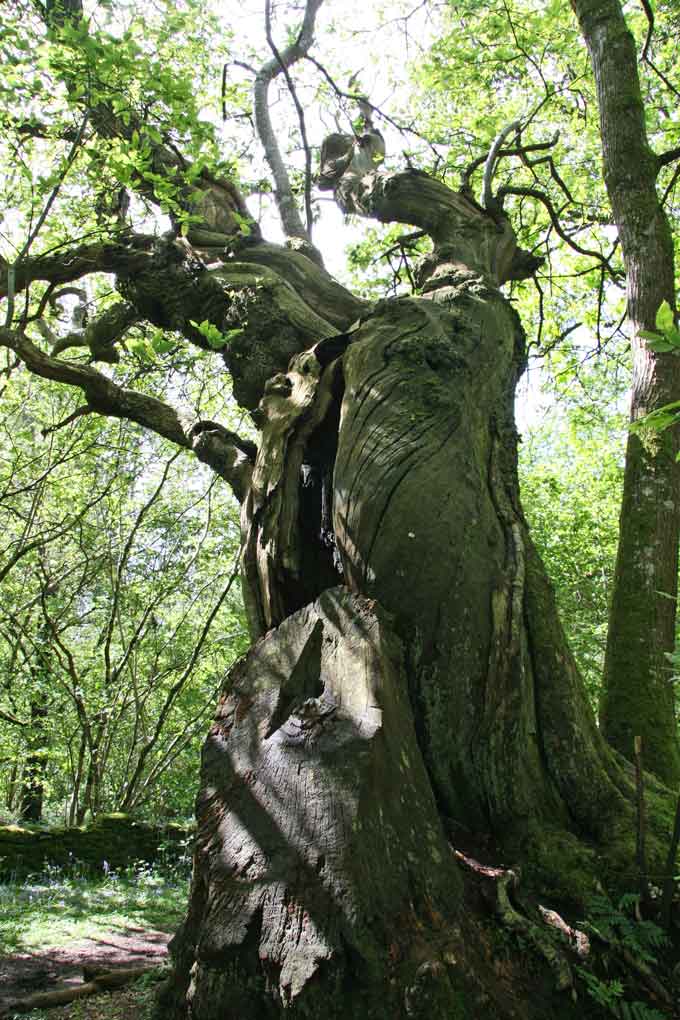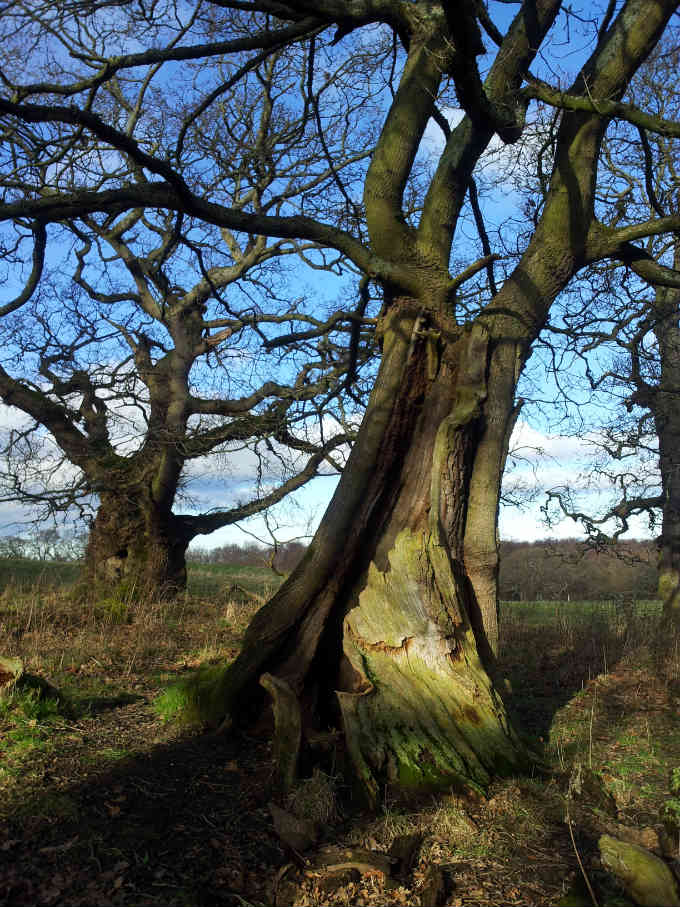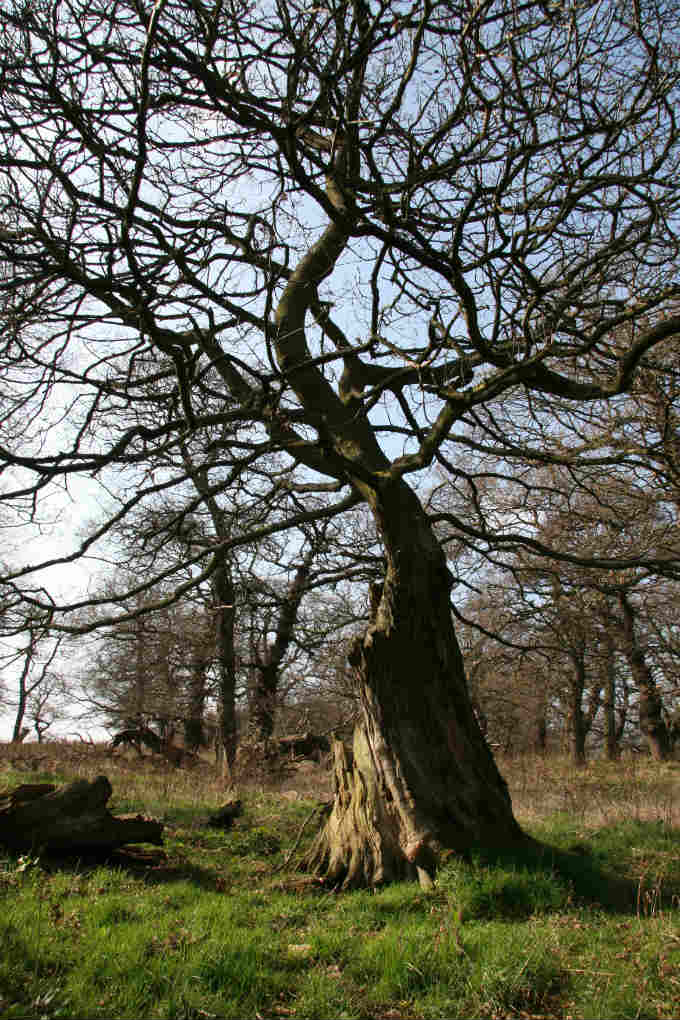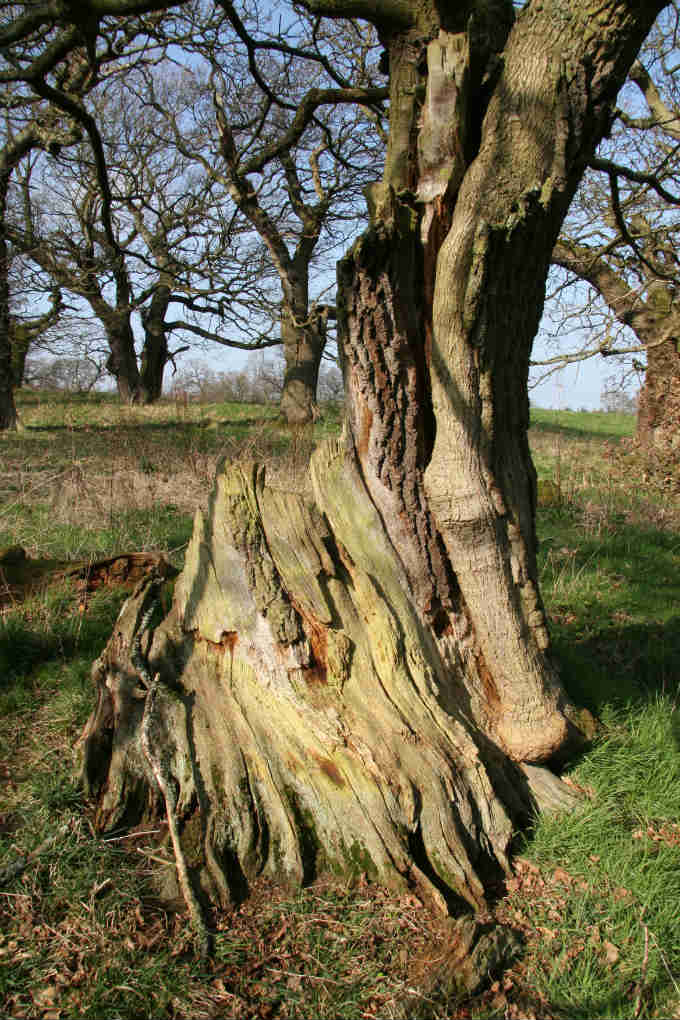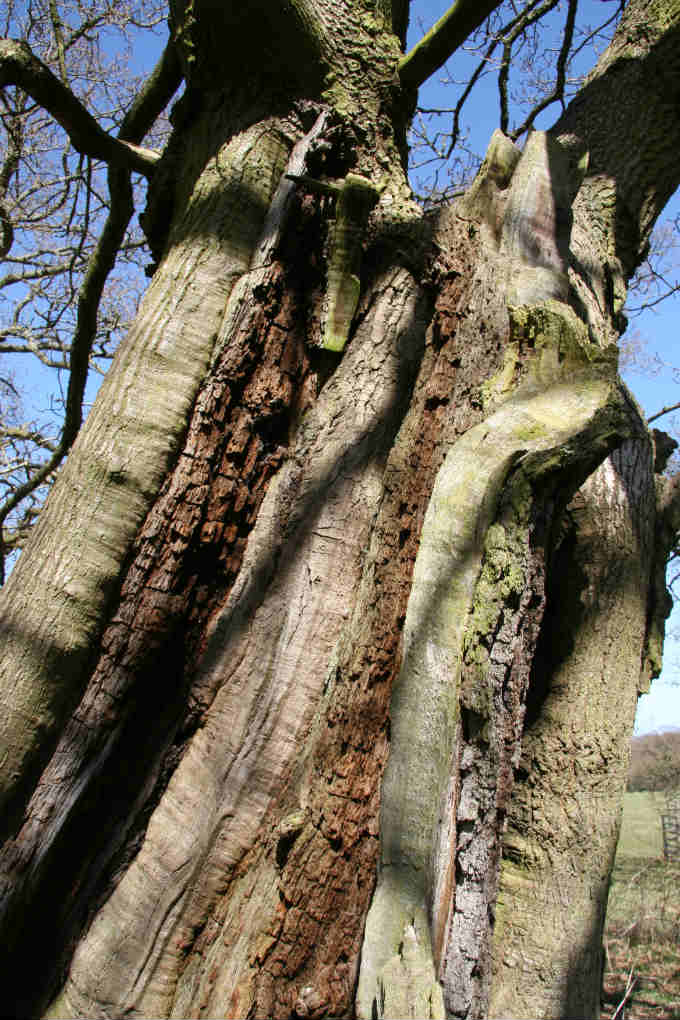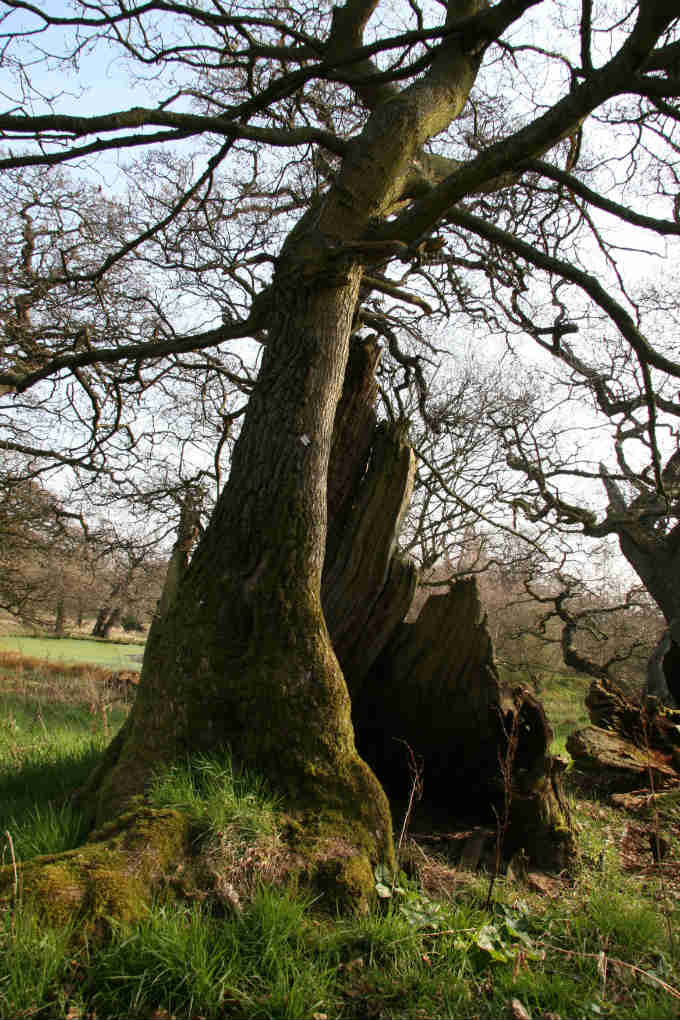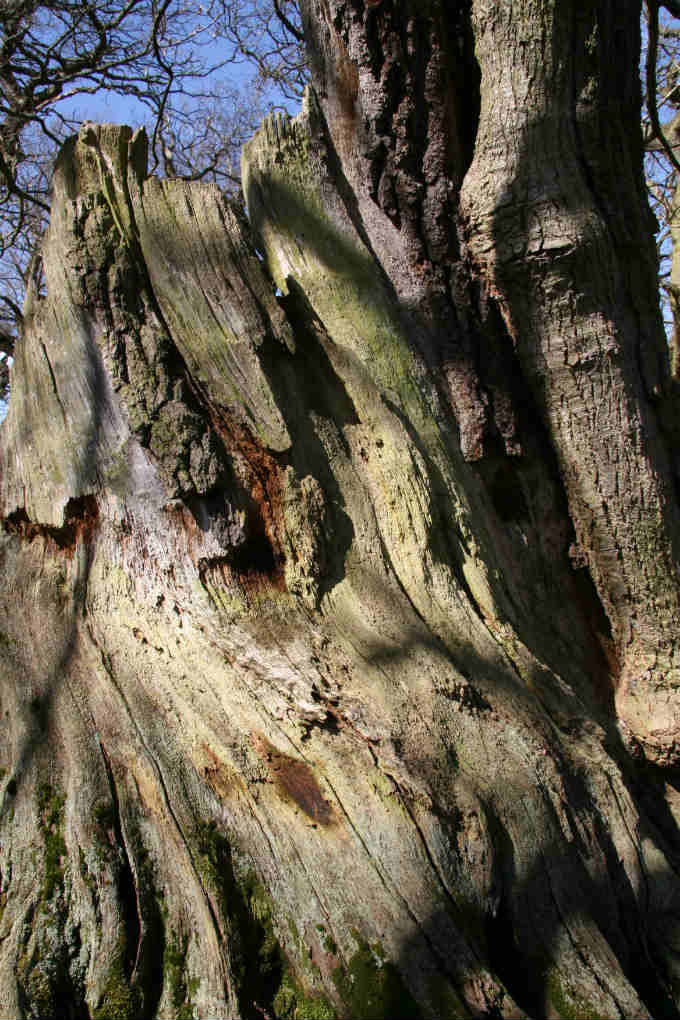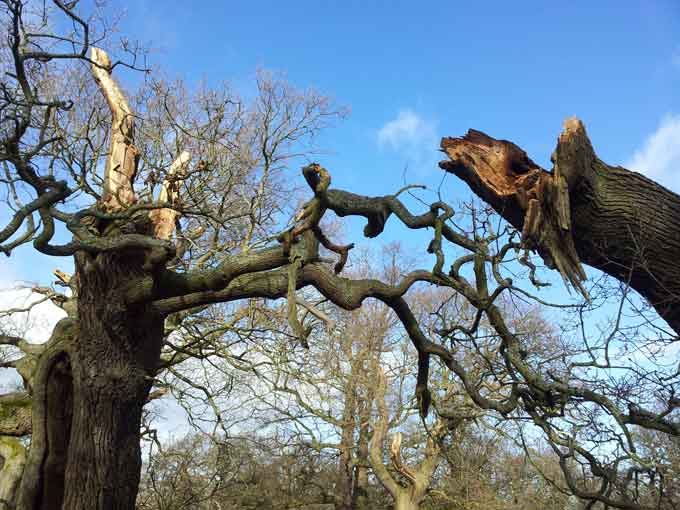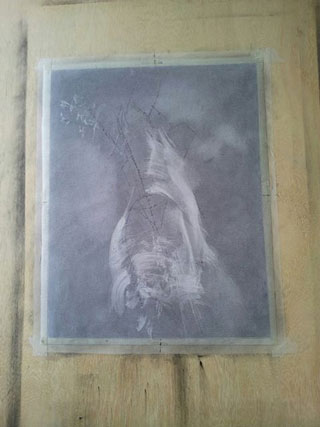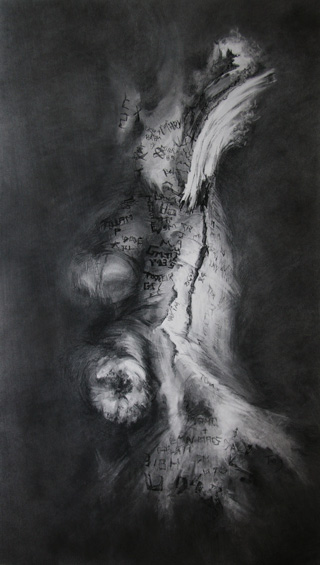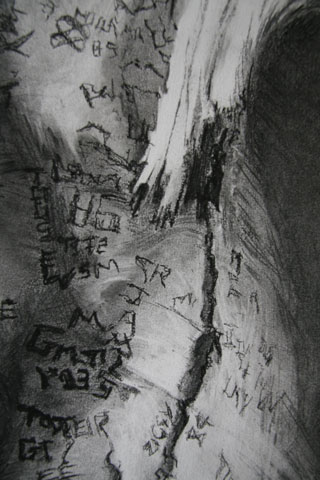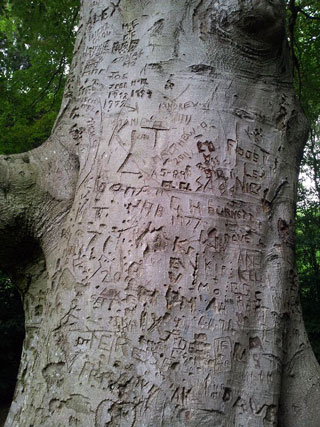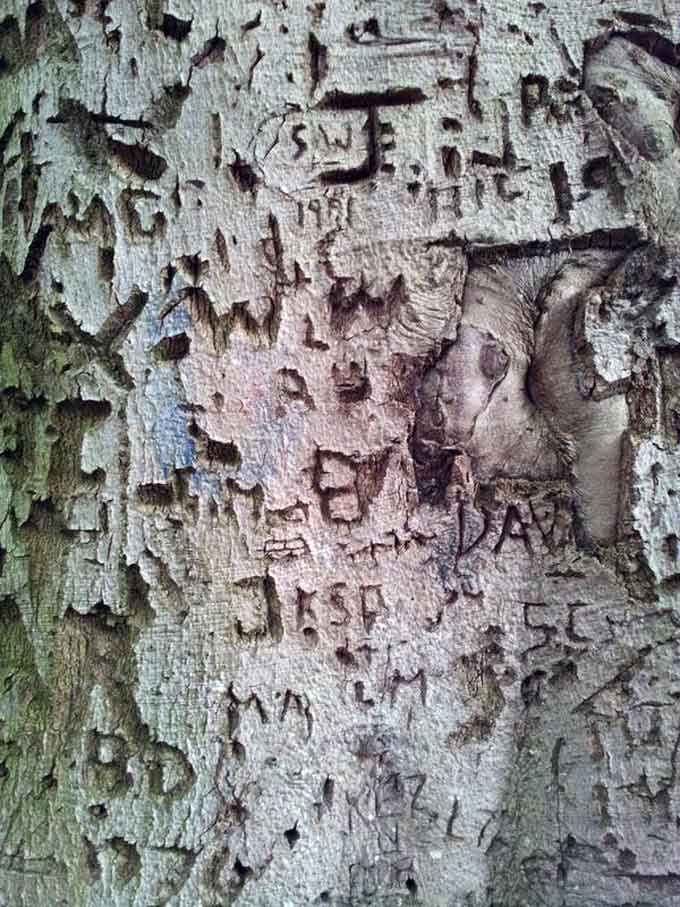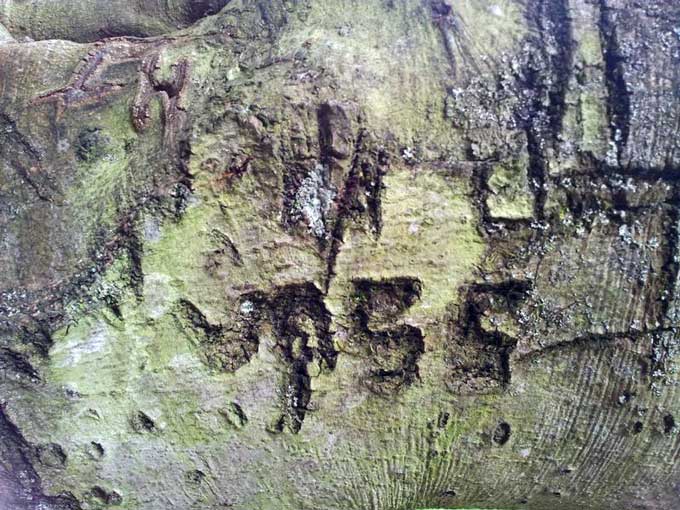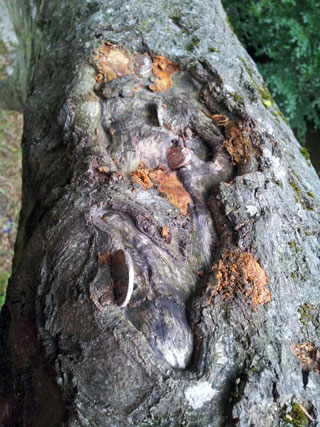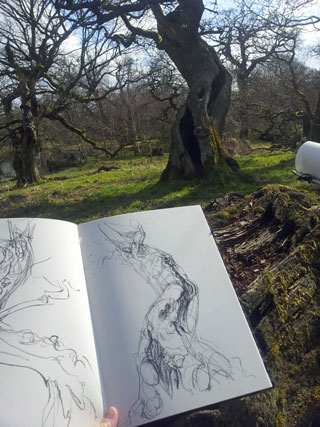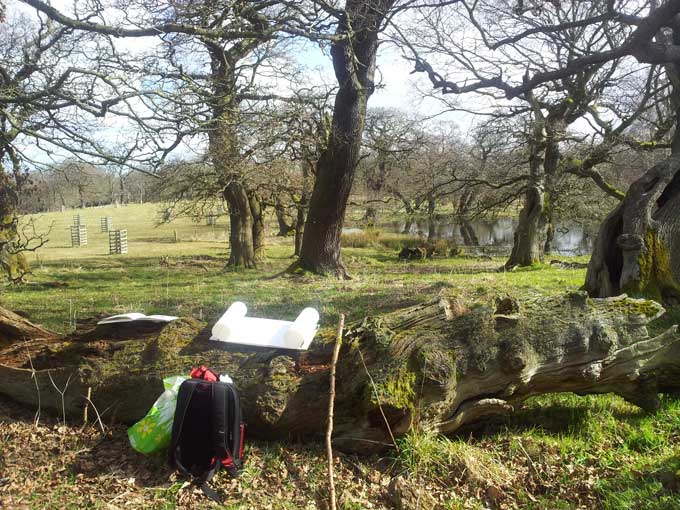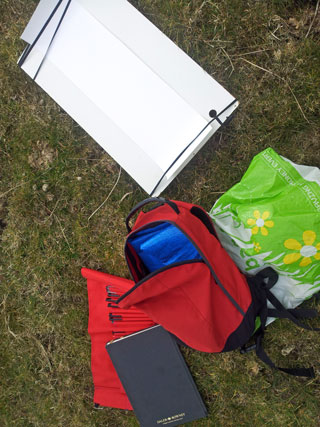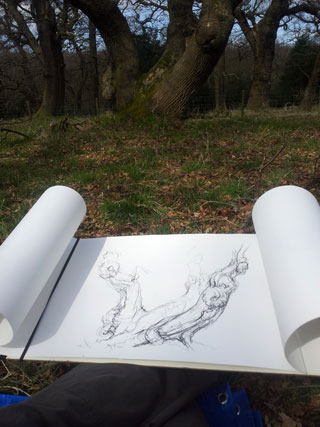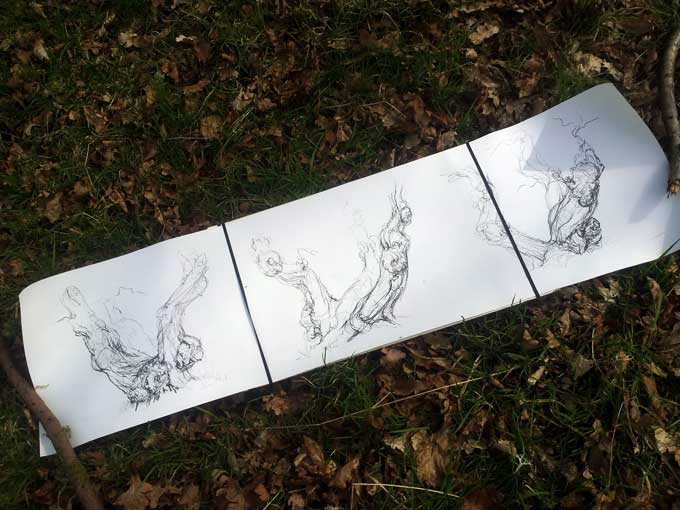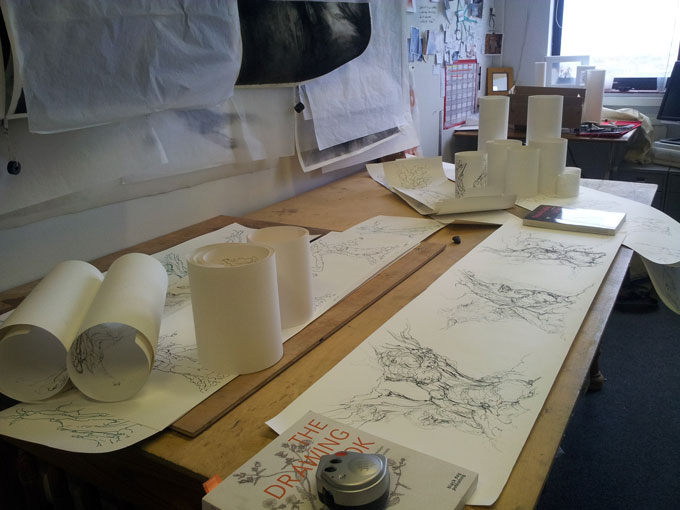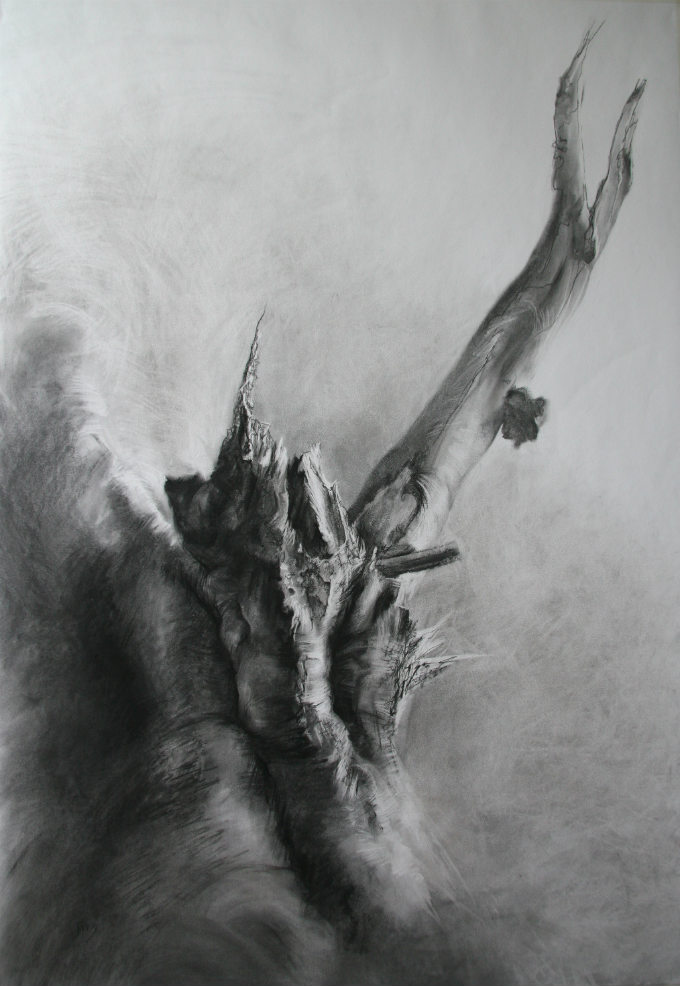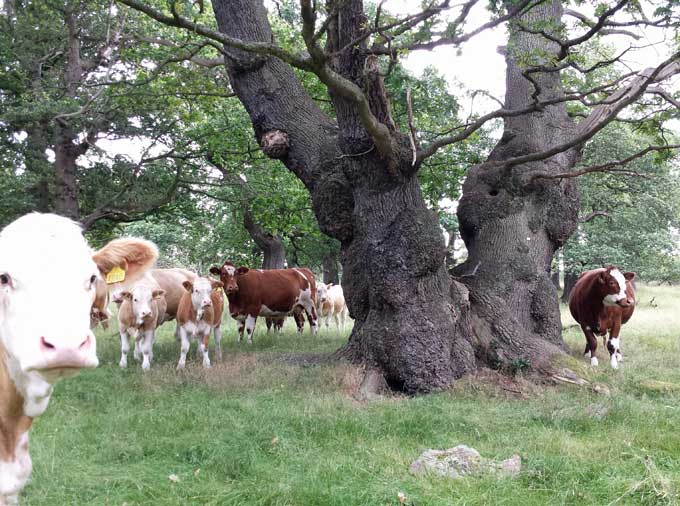
It sounds idyllic €“ €œI€™m going out to the woods to draw today€ and the truth is that it really is, it€™s a very special thing to do. If I didn€™t have those days alone with the trees there would be no art, since the place, the atmosphere, the wildlife, the weather all contribute to the eventual response I make on paper. The sound of the buzzards above, a deer looking startled as it almost bumps into me, a crow flying out of a hole in an old oak at eye level, a strong breeze making the dead wood creak over my head, the intermittent rustle of a toad hopping through the grass €“ all these form part of the experience for me.
However, drawing outdoors can have its little excitements and challenges too. There are the predictable things like rain and wind, cold and midges. And the bugs that insist on walking on my drawing and sometimes refuse to leave, sadly getting squashed as I roll it up. Nettles can make summer drawing unpleasant. High winds mean dangerous conditions underneath old trees and I€™m cautious on those kind of days.
On my last outdoor drawing trip I encountered some very inquisitive cattle which threatened my carefully selected drawing spot. It seems quite funny to think of a grown woman escaping from cows, but they can do you some serious damage, especially if they have their calves to protect.


I€™d set out to do a full 360 drawing of one of the hugely impressive Dalkeith oaks, which will be on show at €˜Time around trees€™ at the Meffan Gallery soon. I€™d come prepared with little tent peg flags to mark my eight viewpoints, a tarp to sit on, my board, and a three and a half metre scroll of my favourite Canson paper. This was going to take most of the day so I took my time deciding on views, thinking about the movement of the sun through the day and doing the initial sketches. Four drawings in and I was happy with my progress until I noticed the herd moving towards me. The calves were at the €˜bolshy teenager€™ stage of their lives and clearly up for some mischief, so I rolled up the drawing carefully, packed my bag and climbed over the fence.
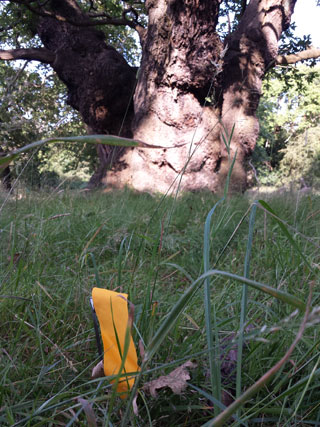
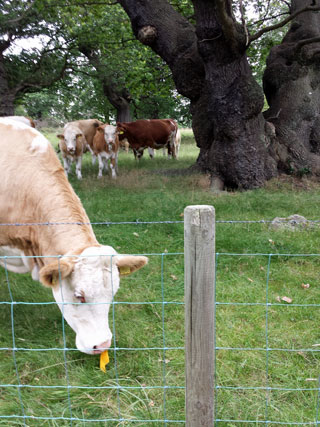
They had a good look round the tree and over at me, then settled in for some leisurely grazing, so I went for a walk and eventually tagged along with a group being given a tour by the woodland manager. After a pleasant break I returned to my now deserted tree and resumed the big drawing.
An hour or so later they were back to play, but this time moved much faster and more determinedly so I only had time to get the drawing and pencils to safety and had to leave the tarp and board.
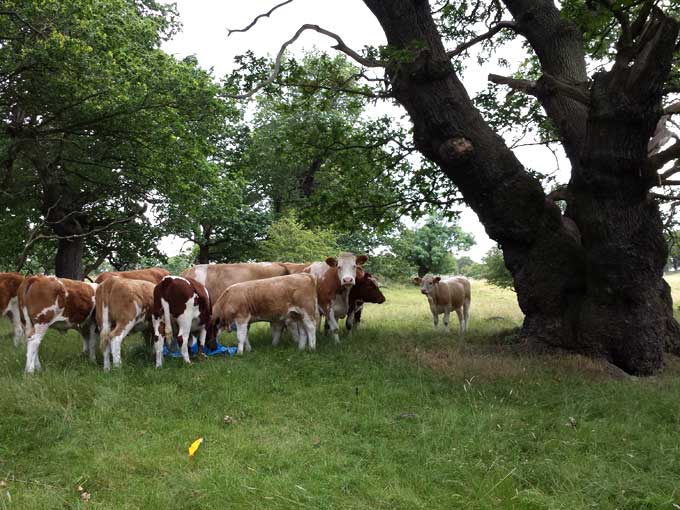
You€™re supposed to put your arms out wide and shout to keep them away but they weren€™t having any of that €“ no amount of arm waving was going to put them off their fun. The youngsters had a great time tossing the tarp around and slobbering all over my board, while their mothers rubbed themselves against the tree and had a good sniff around. I realised from the other side of the fence that I was witnessing an age old scene of traditional wood pasture, and wondered how many woodsmen had been held up from their work by marauding cattle in the past!
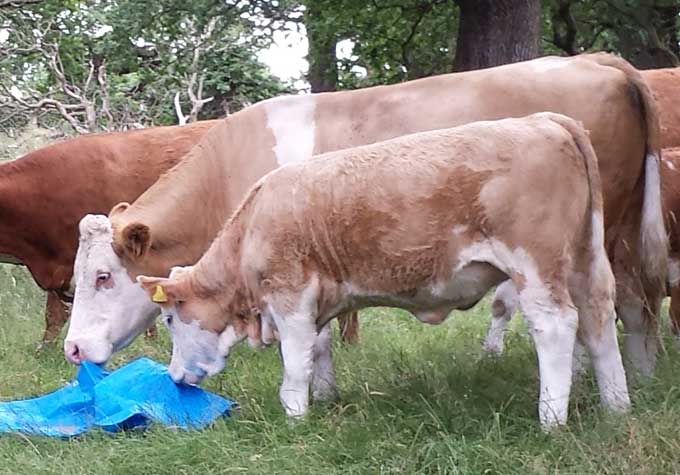
I ended up hiding behind a holly until they got bored and moved on. Ok, I know it’s hardly Olly Suzi and wild dogs, but my tent peg flags were soggy and trampled and my board and tarp unpleasantly slimy. Still, I was happy that my drawing remained intact and I managed to finish all eight views with the occasional glance over my shoulder to check I was alone. I took my longest ever drawing back to the studio, cleaned off the bug bodies and trimmed it ready for the Meffan show next month. I’m hoping to be able to hang it so it kind of envelops you as you view it – so I hope you can come and see it for yourself now you know its story.
